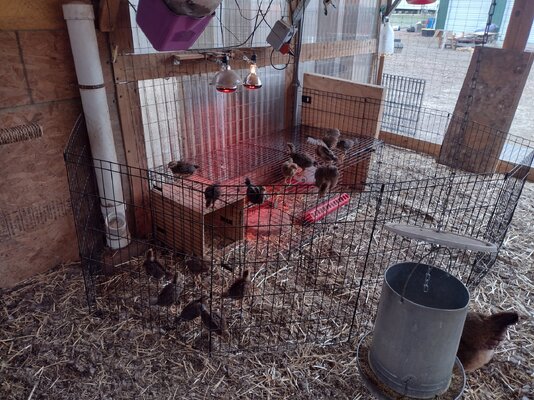imacowgirl2
Songster
For those of you who free-range your flock and also integrate new baby chicks into the flock early, how do you handle free ranging with the babies?
Our current group of 11 chicks is about 5 weeks old now, and have been integrated since 3 weeks old. Up until the past few days, while they've explored the run and right outside the coop door occasionally, they've not shown any interest in following the flock any further abroad...but the past couple days they've started venturing to the compost pile when we come out to dump scraps, so I know its only a short matter of time before they start actually following the hens further abroad.
I'd prefer they stay up closer to the coop until they're a lot bigger, because I fear they'll be picked off by predators a lot more easily while they're small...we have hawks in the area so they, along with the farm dog (though he's pretty old and blind these days), are my main concerns.
So, do you take your chances and let the littles free-range if they desire? If so, do you lose a larger percentage of the littles to predators? Or do you keep the littles locked up somehow until they're much bigger?
Our current group of 11 chicks is about 5 weeks old now, and have been integrated since 3 weeks old. Up until the past few days, while they've explored the run and right outside the coop door occasionally, they've not shown any interest in following the flock any further abroad...but the past couple days they've started venturing to the compost pile when we come out to dump scraps, so I know its only a short matter of time before they start actually following the hens further abroad.
I'd prefer they stay up closer to the coop until they're a lot bigger, because I fear they'll be picked off by predators a lot more easily while they're small...we have hawks in the area so they, along with the farm dog (though he's pretty old and blind these days), are my main concerns.
So, do you take your chances and let the littles free-range if they desire? If so, do you lose a larger percentage of the littles to predators? Or do you keep the littles locked up somehow until they're much bigger?





